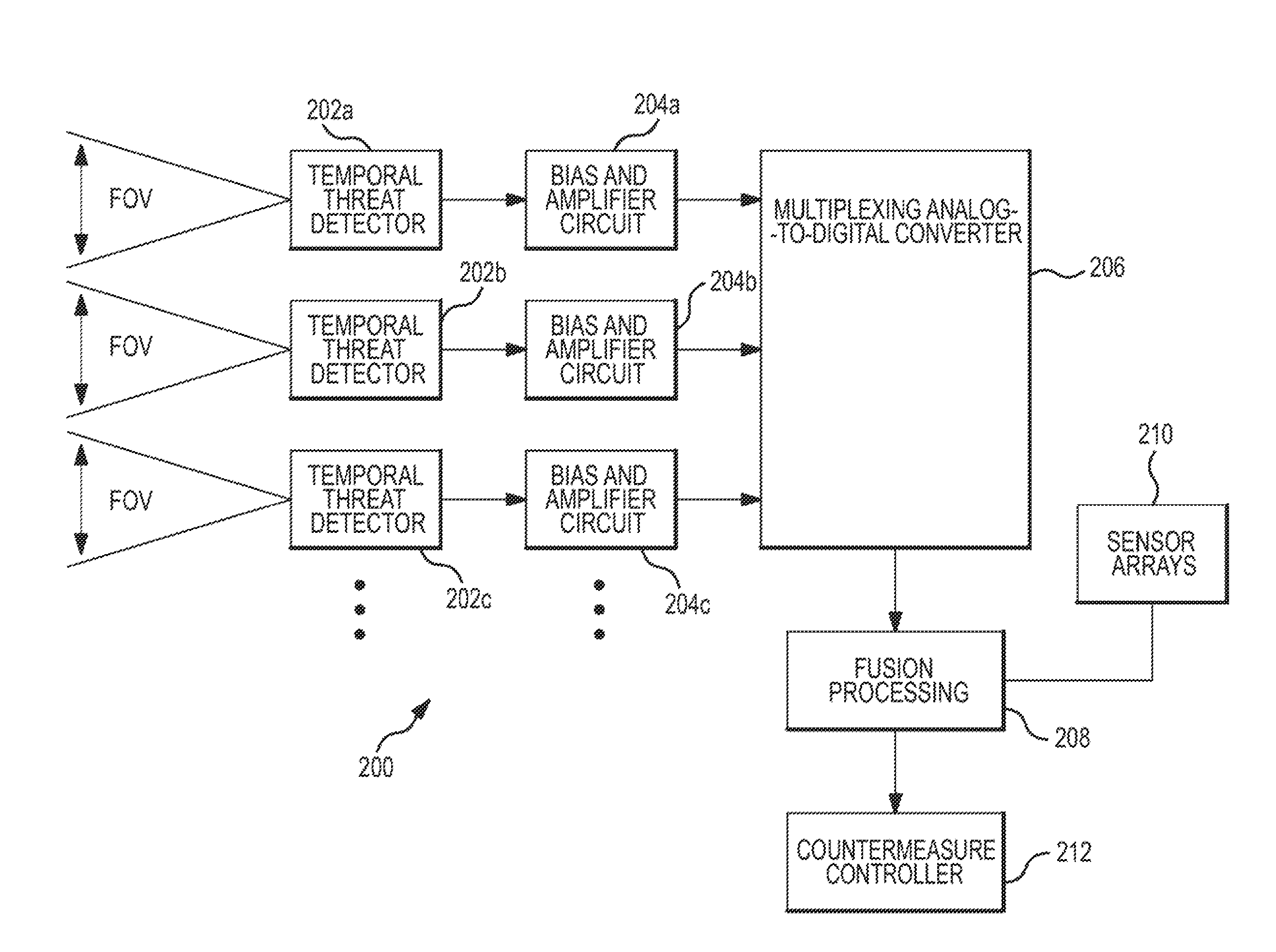Threat launch detection system and method
a detection system and threat technology, applied in the field of sensors, can solve the problems of limiting the types of threats that can be reliably detected, affecting the detection accuracy of target detection systems, and limiting the time for acquisition and processing, so as to achieve the effect of reliably detecting short-burn threats such as tank shells or rpgs
- Summary
- Abstract
- Description
- Claims
- Application Information
AI Technical Summary
Problems solved by technology
Method used
Image
Examples
Embodiment Construction
[0023]Before describing several embodiments of the present invention, the characteristics of several types of short-burn threats will be discussed with reference to FIG. 1. FIG. 1 is a graph showing irradiance as a function of time for various types of short-burn threats and clutter. Various short-burn threats and threat like events on the battlefield are distinct when observed or sensed at a frequency of 1000 Hz or above. FIG. 1 shows a sampling of such threats as measured by a fast radiometer, including several antitank guided missile time sequences with direct fire gun blasts, indirect fire artillery, warhead events, and machine gun fire. These sequences are all measured data from events at various distances from the radiometer.
[0024]FIG. 1 shows that a sensor capable of distinguishing threats would need a minimum of 20 pw / cm2 sensitivity and a top end of about 2×10−6 or about 1×105:1 dynamic range. The figure illustrates that temporal profiling to distinguish typical short-burn ...
PUM
 Login to View More
Login to View More Abstract
Description
Claims
Application Information
 Login to View More
Login to View More - R&D
- Intellectual Property
- Life Sciences
- Materials
- Tech Scout
- Unparalleled Data Quality
- Higher Quality Content
- 60% Fewer Hallucinations
Browse by: Latest US Patents, China's latest patents, Technical Efficacy Thesaurus, Application Domain, Technology Topic, Popular Technical Reports.
© 2025 PatSnap. All rights reserved.Legal|Privacy policy|Modern Slavery Act Transparency Statement|Sitemap|About US| Contact US: help@patsnap.com



